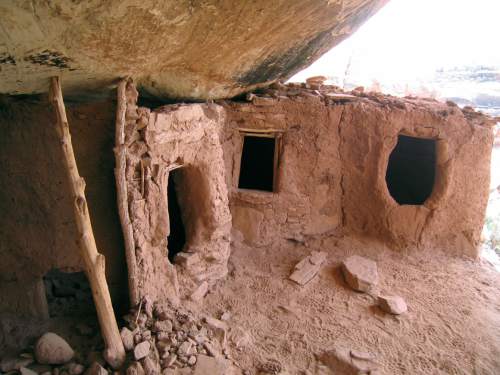This is an archived article that was published on sltrib.com in 2015, and information in the article may be outdated. It is provided only for personal research purposes and may not be reprinted.
For more than five years, Native Nations, including the Hopi, Navajo, Uintah and Ouray Ute, Ute Mountain Ute and Zuni, and grassroots Native American communities represented by the Utah Diné Bikéyah (UDB) organization have been working respectfully and collaboratively with all parties to protect the Bears Ears landscape in San Juan County. The purpose of our proposal is to promote healing between all people and the earth.
Last week, our effort reached a significant milestone as we hand-delivered a formal proposal to both the Obama administration and Congressmen Rob Bishop and Jason Chaffetz to protect the Bears Ears landscape as a national monument. Both Congress and the president have the power to make the Bears Ears proposal a reality, and tribes are determined to see the cultural values in this landscape protected for the future of all Americans.
In April 2013, Bears Ears became the first proposal to be put on the table by a local government in the Public Lands Initiative process, but frustratingly it remains the last to be recognized by elected officials in Utah.
Why is this so? Perhaps because the PLI was designed to rely too heavily on county commissioners, who, in the case of San Juan County, argue that our sacred sites should be opened to ATV recreation and mineral development. We feel as if Native American concerns have been purposefully eliminated from the discussion during the Public Lands Initiative.
Throughout the last six years, San Juan County (where the Native population is 53 percent of the citizenry) and the Utah congressional delegation have demonstrated that they either do not understand how to reach Native American tribes and individuals within their borders, or are unwilling to do so. For example, San Juan County did not announce its PLI open houses on the Navajo radio station or send public mailers to Utah residents who collect their mail in Arizona, even though hundreds of Utah residents living on the reservation must travel to Arizona to retrieve their mail.
Furthermore, before San Juan County initiated its public comment period for citizens in 2014, the Navajo Nation and UDB were assured by the county that the Bears Ears proposal would be included as "Alternative D" on the list of county-identified alternatives. Yet one week before the first open house, San Juan County broke this agreement and excluded Alternative D as an alternative, even though it was developed locally and represented the views of nearly half of the San Juan County population.
Despite the Bears Ears proposal not being listed as an alternative, county residents overwhelmingly endorsed Bears Ears, which received 64 percent of the local comments of support. San Juan County's own documents show that the anti-conservation, pro-development "Alternative B" received just two comments of support — less than 1 percent. Yet this Alternative B was officially endorsed by the San Juan County Commissioners as their preferred alternative in August 2015.
Native American efforts to engage directly with Reps. Bishop and Chaffetz have met with similar results. For example, Congressman Chaffetz has indicated that tribes outside of Utah (the Hopi and Zuni, both federally-recognized tribes) were not likely to be included in the PLI process, even though Pueblo People have ancestral and contemporary ties to the area. Also, to our knowledge neither congressman nor their staffs have visited any Native government headquarters to discuss Bears Ears and the PLI.
It is with these circumstances in mind that the five tribes of the Bears Ears Inter-Tribal Coalition formally submitted its proposal this week to the president and Utah congressmen. The opportunity for Congress to pass the Bears Ears proposal through the PLI still exists. However, whether Congress or the president ultimately acts, the archaeological antiquities in San Juan County continue to be looted across the Bears Ears landscape. It is long past time to work together to protect Bears Ears to fulfill our goal of bringing healing to all people and the earth.
Malcolm Lehi is a Ute Mountain Ute Tribal Councilman in White Mesa. Willie Grayeyes is chairman Utah Diné Bikéyah and lives on Navajo Mountain.





